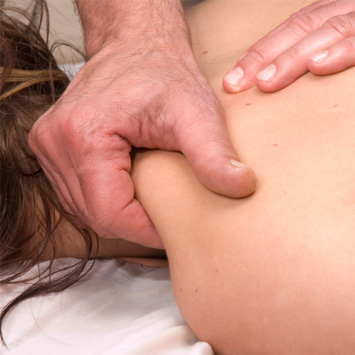How to Prepare for a Deep Tissue Massage
Many first-time massage clients do not realize that they should prepare for their massage before they arrive at the spa.
 Which is why we have provided the below list from Livestrong for the best tips on how to prepare for a deep tissue massage.
Which is why we have provided the below list from Livestrong for the best tips on how to prepare for a deep tissue massage.
A deep tissue massage is different from the typical Swedish massage because it works the deeper layers of your muscles in order to relieve tension and release toxins. Since a deep tissue massage will release many of the toxins hidden in your muscles, it is important to drink water before and after the deep tissue massage to assist in removing these toxins from your body faster.
Along with the recommendation to stay hydrated, the following article gives additional advice on preparing for your next deep tissue massage.
How to Prepare for a Deep Tissue Massage
A deep tissue massage varies greatly from a Swedish or sports massage. While the goal of a Swedish massage is to use long strokes to relax you, a deep tissue massage uses forceful, deep strokes in order to work deeper muscles and connective tissues. The goal of a deep tissue massage is to target deep muscles and break up knots, improve muscle positions and release built-up toxins.
Step 1
Do research to find a good massage therapist. Call massage businesses in your area to inquire about a the credentials of their staff. In addition to a certificate and license to practice massage, ask about how long the individual has been performing massage services. You could also ask your doctor to recommend a therapist.
Step 2
Prepare relevant health information for the therapist. A deep tissue massage can be somewhat uncomfortable. If you have any pain in your body or injuries, this is information the therapist will need to know. Preparing the information ahead of time will ensure you do not forget anything when you are at your appointment. You may also choose to include information pertaining to any allergies you have or preferences on aromatherapy scents.
Step 3
Drink water. Deep tissue massages are designed to break up knots and adjust your muscles. They also release toxins from the muscles, which might make you feel fatigued or nauseated after a massage. Staying well hydrated by drinking water before and after the massage will help alleviate these symptoms.
Step 4
Take a warm shower before the massage to loosen up your muscles and help put you in a relaxed state. A fresh, clean body will also make the experience more pleasant for your massage therapist.
Step 5
Wear loose, comfortable clothing to the massage appointment. This will help you continue to feel relaxed and make the process of undressing easier. You may also feel sore or tender following the massage, so loose clothing will be more comfortable to wear.
It is important that you keep the above steps in mind the next time that you schedule a deep tissue massage. You may also want to be sure that you have time to stop at home and shower after your deep tissue massage, as you may feel the need to wash the massage oils from your skin and hair. We want you to have the best experience possible during your deep tissue massage, and this advice will help you get the most out of your experience.
A deep tissue massage is typically used on those with more chronic muscle pains, while a Swedish massage is meant to help the body relax. It is important that you provide the massage therapist with relevant medical information before your deep tissue massage to ensure that it is the correct massage type for your body. Contact the Richard Francis Spa and Salon to see which type of massage therapy would benefit you and schedule your Swedish or deep tissue massage today.


